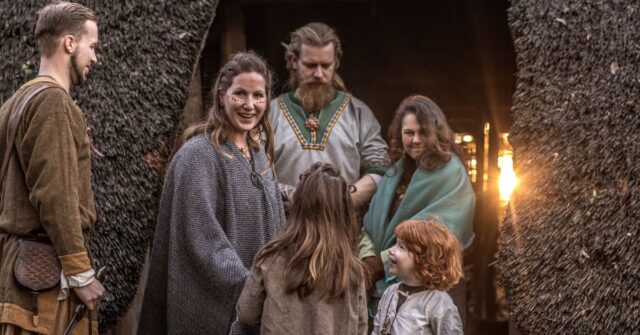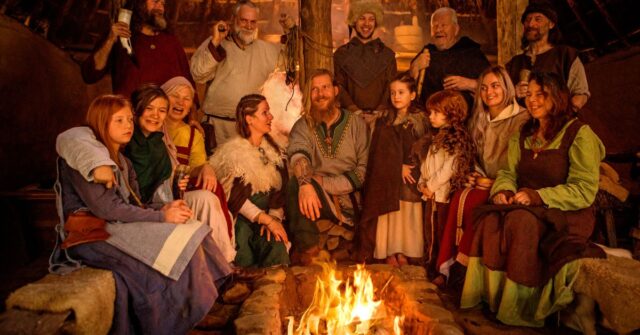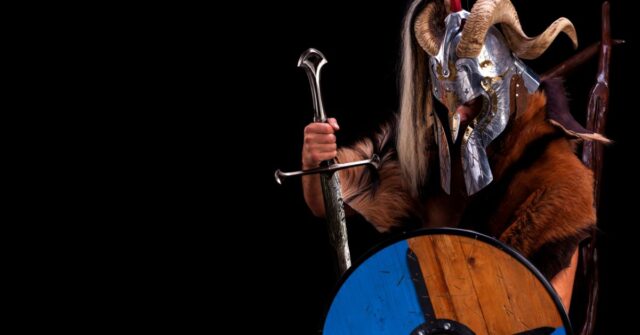The fascination with Vikings has seen a remarkable resurgence in recent years, with modern enthusiasts engaging in various aspects of Viking culture.
However, this revival raises the question: Are modern Vikings appropriating the past, or is their engagement a respectful homage?
Introduction
The resurgence of Viking culture in contemporary times is more than just a trend; it’s a phenomenon that spans reenactments, media portrayals, and even modern-day practices.
But where does admiration end and appropriation begin?
The Resurgence of Viking Culture
From movies and TV shows like “Vikings” and “The Last Kingdom” to festivals and reenactments, Viking culture is experiencing a notable revival.
This fascination is not just a casual interest but a deep-seated admiration for the Viking way of life, their myths, and their history.


Understanding Cultural Appropriation
Cultural appropriation involves adopting elements of one culture by members of another culture, often without permission.
It becomes problematic when the borrowing is done superficially, or without understanding and respecting the original culture’s significance. In the case of Viking culture, this can be a fine line to walk.
Historical Context of the Viking Age
To understand the modern engagement with Viking culture, it’s essential to explore the historical context of the Viking Age, which spanned from approximately 793 to 1066 AD.
The Viking Age: An Overview
The Viking Age was marked by Norse exploration, trading, and raiding. Originating from Scandinavia, Vikings ventured across Europe, Asia, and even North America, leaving an indelible mark on history.
Exploration, Trade, and Cultural Impact
Vikings were not just raiders but also traders and explorers. They established trade routes, settled in new lands, and interacted with various cultures.
This exchange significantly influenced the regions they touched, from the British Isles to the Byzantine Empire.
Viking Society and Beliefs
Viking society was complex, with a rich tapestry of beliefs and social structures.
Norse mythology, with its pantheon of gods and mythical tales, played a central role in everyday life, influencing everything from social norms to artistic expression.
Modern Engagement with Viking Culture
Today, many people engage with Viking culture through reenactments, festivals, and even religious practices. This engagement can range from casual interest to a dedicated lifestyle.
Viking Reenactments and Festivals
Reenactments and festivals offer a way for enthusiasts to immerse themselves in Viking culture. These events are often meticulously planned to ensure historical accuracy.


Historical Accuracy in Reenactments
Reenactors strive for historical fidelity, crafting period-accurate clothing, weapons, and tools. These efforts help to educate the public about Viking history and culture.
Viking Festivals Around the World
From the Wolin Festival in Poland to local Viking markets in Scandinavia, these gatherings celebrate Viking heritage through combat demonstrations, traditional crafts, and communal feasts.
Contemporary Norse Paganism
Some modern-day practitioners have revived Norse paganism, following the religious practices of their Viking ancestors.
Modern Religious Practices
Modern Norse pagans, or Heathens, conduct ceremonies and rituals inspired by historical accounts of Viking religion. These practices often include offerings to the gods and seasonal festivals.
Significance of Norse Mythology Today
Norse mythology continues to inspire not only religious practices but also popular culture. Characters like Thor and Loki have found new life in comics and movies, keeping the myths relevant and accessible.


Mental Health and Community Building
For many, participating in Viking reenactments or practicing Norse paganism provides a sense of community and purpose.
The physical activity, camaraderie, and connection to history can have positive effects on mental health.
Media and Pop Culture Representations
Media representations of Vikings have played a significant role in shaping public perceptions, often blurring the lines between historical facts and creative fiction.
The Viking Image in Films and TV Shows
Movies and TV shows have popularized a certain image of Vikings, emphasizing their warrior ethos and adventurous spirit.
While entertaining, these portrayals sometimes sacrifice historical accuracy for dramatic effect.
Historical vs. Fictional Portrayals
Shows like “Vikings” and “The Last Kingdom” mix historical events with fictional narratives, creating compelling stories that engage audiences but may distort historical facts.
Impact on Public Perception
These portrayals influence how people perceive Viking history and culture. They can spark interest and curiosity but also risk spreading misconceptions about the Vikings.


Popular Literature and Video Games
Beyond screen adaptations, Viking culture has also permeated literature and video games, providing immersive experiences that draw on Norse mythology and historical themes.
Influence of Viking Myths and Legends
Viking myths and legends continue to inspire writers and game developers, resulting in works that explore themes of heroism, adventure, and the supernatural.
Educational Impact of Pop Culture
Viking-themed media can serve as a gateway to education, encouraging audiences to learn more about Viking history and culture through documentaries, books, and online courses.
Linguistic and Cultural Legacy
The legacy of the Vikings is not confined to history books; it permeates modern languages, symbols, and social values.
Influence on Modern Languages
The impact of Old Norse on contemporary languages is profound, with many words and linguistic structures traceable back to Viking times.
Old Norse and Contemporary Scandinavian Languages
Modern Scandinavian languages like Norwegian, Danish, and Swedish share many similarities with Old Norse, reflecting their common linguistic heritage.
Norwegian, Danish, and Swedish Connections
The linguistic ties between these languages are evident in shared vocabulary and grammatical structures, underscoring the enduring influence of the Viking era.
Runes, Symbols, and Art
Viking runes and symbols hold significant cultural value and continue to be used in modern art and jewelry, often imbued with historical and mythical significance.


Historical Significance of Runes
The runic alphabet, or Futhark, was used for writing and magical inscriptions. Its historical significance is still recognized today, with runes often used in modern artistic expressions.
Modern Usage and Symbolism
Runes and Viking symbols like the Valknut and Mjölnir appear in various contemporary contexts, from tattoos to corporate logos, reflecting a continued fascination with Viking heritage.
Social Values and Norms
Viking social values, such as community, hospitality, and environmental stewardship, have influenced modern Scandinavian societies.
Community and Hospitality
The Viking concept of community and mutual support is mirrored in contemporary Scandinavian social norms, which emphasize collective well-being and hospitality.
Environmental Appreciation
The Vikings’ close relationship with nature is reflected in modern Scandinavian attitudes towards environmental conservation and sustainable living.
Cultural Appropriation vs. Appreciation
Navigating the boundary between cultural appropriation and appreciation requires understanding and respect for the original culture.


Defining Cultural Appropriation
Cultural appropriation involves taking elements of a culture without permission or understanding, often leading to misrepresentation and disrespect.
Respectful Engagement with Viking Culture
Engaging with Viking culture respectfully involves recognizing its historical context and ensuring that representations are accurate and considerate.
Recognizing Historical Context
Understanding the historical and cultural background of Viking practices and symbols is crucial to respectful engagement and avoids perpetuating stereotypes.
Ethical Considerations in Modern Usage
When using Viking symbols or practices, it’s important to consider their historical significance and avoid trivializing or misrepresenting them.


Commercial and Political Exploitation
Viking culture has sometimes been exploited for commercial gain or political agendas, which can distort and devalue its historical significance.
Viking Symbols in Marketing
Commercial use of Viking symbols can often strip them of their cultural meaning, turning them into mere commodities rather than respectful tributes to Viking heritage.
Reactionary and Regressive Uses
In some cases, Viking imagery has been co-opted by groups with regressive agendas, using these symbols to promote exclusionary or nationalist ideologies.
Conclusion
Reflecting on the Viking legacy helps us appreciate the richness of this historical culture while considering how to engage with it respectfully in the modern world.


Reflecting on the Viking Legacy
The Vikings left an enduring legacy that continues to captivate and inspire.
Their contributions to exploration, trade, and cultural exchange have had a lasting impact, and their myths and legends remain a source of fascination.
The Importance of Historical Understanding
Understanding the historical context of the Viking Age is crucial for appreciating their cultural legacy.
This involves acknowledging both their achievements and the more controversial aspects of their history, such as their raiding and warfare.
Future Directions in Engaging with Viking Culture
As interest in Viking culture continues to grow, it is important to engage with it in a way that is respectful and informed.
This means continuing to educate ourselves about Viking history and being mindful of how we represent and interpret their legacy.











